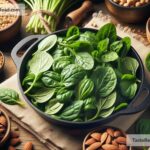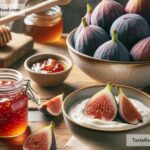The Role of Fiddlehead Ferns in Staying Energized During Tough Tasks
Nature is full of surprises. Sometimes, you find energy and health hidden in the most unexpected places. One such place is a little plant called the fiddlehead fern. These curly, bright green plants are not only beautiful but also packed with nutrients that can help you stay energized during heavy work, demanding activities, or long days. Let’s explore how fiddlehead ferns play a role in keeping us strong and active during tough tasks.
What Are Fiddlehead Ferns?
Fiddlehead ferns are young, coiled shoots of certain types of ferns, like the ostrich fern. They get their name because they look like the decorative head of a fiddle, a string instrument. These plants are usually harvested during early spring before they uncurl and grow into mature leaves.
Fiddlehead ferns have been eaten for centuries in many parts of the world, including North America, Asia, and Europe. Indigenous communities in North America, such as the Wabanaki people, have long known about their nutritional benefits. Today, fiddlehead ferns are considered a seasonal delicacy and can be found at farmers’ markets and specialty grocery stores.
Packed With Nutrients
Tiny but mighty, fiddlehead ferns contain a treasure trove of nutrients. Here’s what makes them special:
-
Carbohydrates: Carbohydrates are your body’s main source of energy. Fiddlehead ferns provide a healthy amount of carbs, making them great fuel for intense activities like hiking, exercising, or even working long hours. Unlike sugary snacks, the carbs in fiddleheads give you steady energy, so you don’t crash halfway through your day.
-
Antioxidants: Fiddleheads are packed with antioxidants, which help protect your body from stress and fatigue. When you’re working hard, your body produces free radicals — molecules that can cause damage to your cells. Antioxidants fight these free radicals, helping your body stay strong and efficient even under pressure.
-
Iron: Demanding tasks like labor-intensive jobs or endurance sports require oxygen to flow throughout your body. Iron supports your body’s ability to produce hemoglobin, a substance that carries oxygen in your blood. Fiddlehead ferns are a great source of iron, helping to keep your energy levels up and prevent fatigue.
-
Fiber: Staying energized isn’t just about eating; it’s also about digestion. Fiddleheads contain fiber, which helps your digestive system work properly. When you’re on the go, having a well-functioning digestive system ensures that your body absorbs all the nutrients it needs.
-
Vitamins: Fiddlehead ferns are rich in vitamins like Vitamin A, Vitamin C, and B vitamins. Vitamin A supports your eyes, skin, and immune system, while Vitamin C boosts your body’s repair processes. B vitamins are especially important because they help your body turn food into energy, keeping you active and focused.
How Fiddlehead Ferns Support Physical and Mental Effort
When you’re tackling tough physical tasks, whether it’s outdoor activities like farming, construction, or hiking, your body needs a lot of energy. Fiddlehead ferns make a great addition to a meal because they provide carbs for fuel, iron for oxygen flow, and vitamins to repair and strengthen your body.
But it’s not just physical effort where fiddleheads can help. Mental tasks like solving complicated problems, focusing on detailed work, or studying for long hours also demand energy. Your brain relies on steady glucose levels and essential nutrients to perform at its best. The B vitamins and antioxidants in fiddlehead ferns can give your brain the boost it needs to stay sharp and focused.
How to Add Fiddlehead Ferns to Your Diet
Fiddlehead ferns are delicious, but they need to be prepared properly before eating. Eating them raw is not recommended, as they can contain small amounts of toxins that are easily removed by cooking.
Here’s how you can prepare them:
- Clean: Rinse fiddlehead ferns under cold water and remove any brown papery skin.
- Blanch: Boil them for 5-7 minutes to remove bitterness and toxins.
- Cool: Transfer them to ice water immediately to stop cooking.
- Cook: Sauté them with garlic, olive oil, and a pinch of salt for a simple dish. You can also add them to stir-fries, salads, omelets, pasta, or soups.
With their earthy and nutty flavor, fiddlehead ferns can make any dish exciting while giving your body the nourishment it needs.
Safety First: A Word of Caution
While fiddlehead ferns are nutritious, it’s important to know which type of fern you’re eating. Not all ferns are safe for consumption. Most people eat fiddleheads from ostrich ferns because they are known to be edible.
Make sure to thoroughly cook fiddleheads before eating them to avoid stomach upset. If you’re unsure about identifying them yourself, buy them from a reliable market.
Nature’s Secret to Energy
When life gets busy or tasks become demanding, the food you eat plays a big role in your performance. Fiddlehead ferns are an excellent choice for staying energized and healthy. They’re loaded with nutrients that keep your body and mind running smoothly, whether you’re working hard, solving problems, or exploring the outdoors.
Next spring, consider giving fiddlehead ferns a try. They’re not just food; they’re nature’s secret to helping you power through your toughest days!


